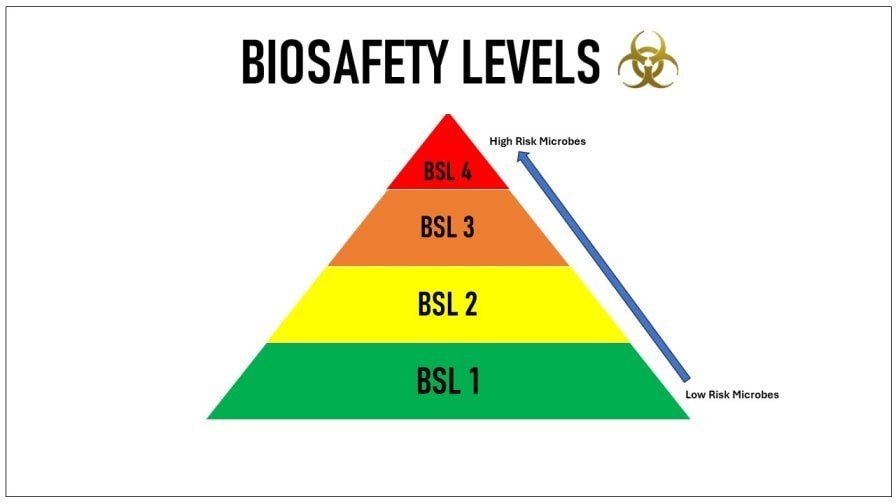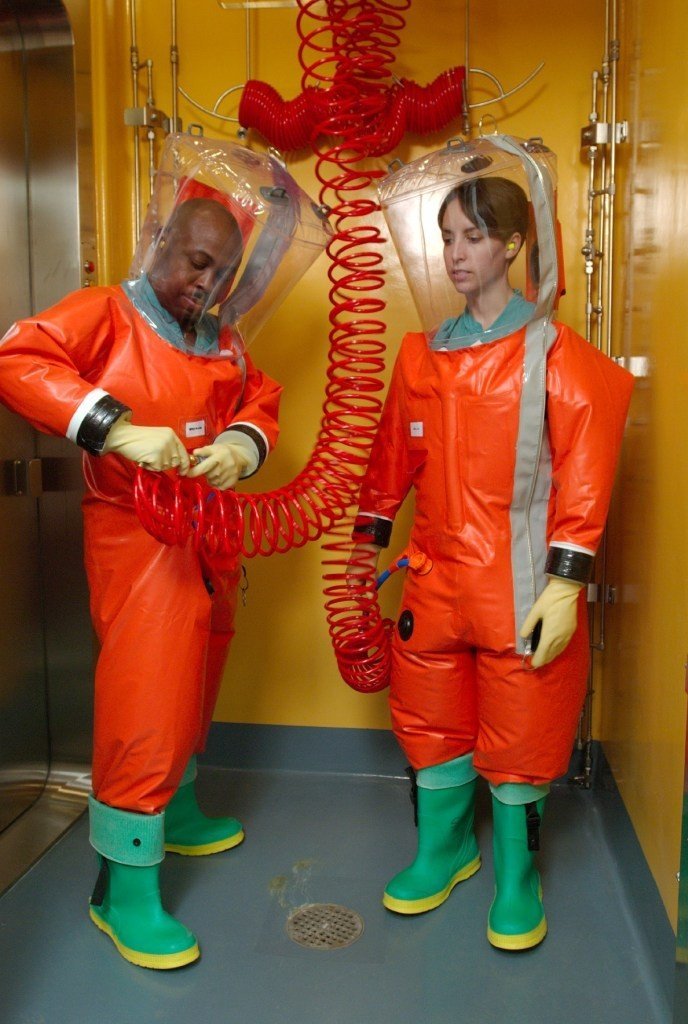Biosafety levels in Microbiology are established to safely handle the microorganisms in the laboratory. The primary objective is to minimize the risks associated with working with various microbes. The microbes may range from harmless to highly infectious pathogens. The concept of biosafety levels was developed to standardize the safety measures.
Table of Contents
This classification system, ranging from Biosafety Level 1 (BSL-1) to Biosafety Level 4 (BSL-4), allows laboratories to design their safety protocols based on the specific characteristics of the microorganisms they are working with.
It is important to work with deadly microorganisms, and at the same time, it is also important to protect ourselves and the environment. That is exactly where biosafety levels come into the picture. Laboratories engaging in microbiological research must adhere to these biosafety guidelines according to the level of risk associated with the microorganisms being studied. Let us explore the biosafety levels and how laboratories deal with safety and ethical considerations.

In the following sections, we will discuss each biosafety level, containment measures, and safety protocols associated with BSL-1 to BSL-4.
What are Biosafety Levels?
Biosafety levels are a set of containment principles designed to protect individuals and the environment from exposure to potentially hazardous microorganisms. The levels range from BSL-1 to BSL-4, each corresponding to different degrees of risk.

Biosafety Level 1
Biosafety Level 1 or BSL-1 represents the foundational level of containment practices in microbiological laboratories. At this level, operators work with well-characterized microorganisms like non-pathogenic strains of E. coli that pose minimal risk to humans and the environment. The primary goal of BSL-1 is to implement basic microbiological safety measures, emphasizing the importance of good laboratory practices to prevent unintentional contamination. Standard laboratory equipment and procedures are sufficient at this level, and operators are required to follow basic hygiene practices such as hand washing and the use of personal protective equipment (PPE).
Basic practices to follow in the BSL-1 laboratory
- Providing hand washing facility to the technicians.
- Wearing of lab coat, gloves, and eye protection.
- Limited access to non-staff members.
- Regular cleaning and disinfection of the laboratory.
- Warning signages to be displayed.
Biosafety Level 2
Biosafety Level 2 (BSL-2) represents an intermediate level in the biosafety levels’ hierarchy. It is designed to address the increased risks associated with microorganisms like Staphylococcus aureus. At this level, laboratories handle agents that are hazardous to personnel and the environment but are not associated with severe diseases.
The focus in BSL-2 facilities is on implementing additional safety measures to prevent accidental exposure and maintain control over the laboratory environment. Restricted access, clear signage, and adherence to specific protocols are critical elements in BSL-2 laboratories.
In BSL-2, laboratory personnel must be aware of the risks of microorganisms they are working with and take precautions to minimize the risk of contamination. Personnel are required to wear appropriate personal protective equipment (PPE), such as lab coats, gloves, and eye protection.
In addition to the standard laboratory practices of BSL-1, the following practices must be followed in BSL-2 labs.
- Using of Biosafety cabinet.
- Training of laboratory personnel.
- Availability of eye wash station.
- Vaccination to the personnel if applicable.
- Restricted entry during operations.
- Biohazard warning signages.
Biosafety Level 3
Biosafety Level 3 (BSL-3) is specifically designed for work involving microorganisms that can cause lethal diseases through respiratory transmission, like Mycobacterium tuberculosis. BSL-3 laboratories must implement robust containment measures to mitigate the risks of handling pathogens of concern.
Personnel working at this level not only follow stringent safety protocols but also operate in facilities equipped with specialized engineering controls, such as controlled ventilation systems and restricted access.
Personal protective equipment (PPE) requirements in BSL-3 often include respiratory protection. These measures collectively provide safety to operators and the environment.
In addition to the standard laboratory practices of BSL-1 and 2, the following practices must be followed in BSL-3 labs.
- Periodic medical testing for laboratory personnel.
- Full body garment with respiratory protection.
- Restricted entry always.
Biosafety Level 4
Biosafety Level 4 (BSL-4) holds the highest rank of biosafety levels. It represents the highest degree of containment and precaution in the laboratory. BSL-4 facilities are designed exclusively for research involving dangerous and unusual microbes that pose an extremely high risk of causing life-threatening diseases.
Usually, these diseases have no cure or treatment. These high-risk pathogens, which may include viruses like Ebola and Marburg, require a high level of security and control. BSL-4 laboratories are characterized by sophisticated engineering controls, stringent operational protocols, and specialized personal protective equipment to ensure maximum containment.
In BSL-4 laboratories, personnel undergo rigorous training, and access is strictly controlled. The facilities are designed to prevent any accidental release of pathogens by providing features such as airlocks, multiple layers of containment, and sophisticated waste management systems. As an additional layer of protection, the personnel working in BSL-4 environments wear full-body positive pressure suits with air supply.
In addition to the standard laboratory practices of BSL-1, 2, and 3, the following practices must be followed in BSL-4 labs.
- Decontamination of materials before exiting the lab.
- Full body suit with positive pressure.
- Taking a shower after leaving the facility.


